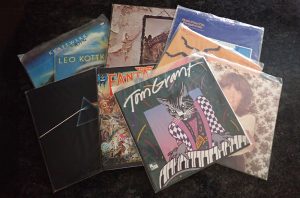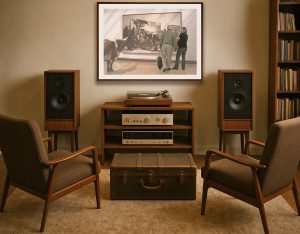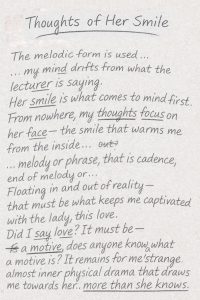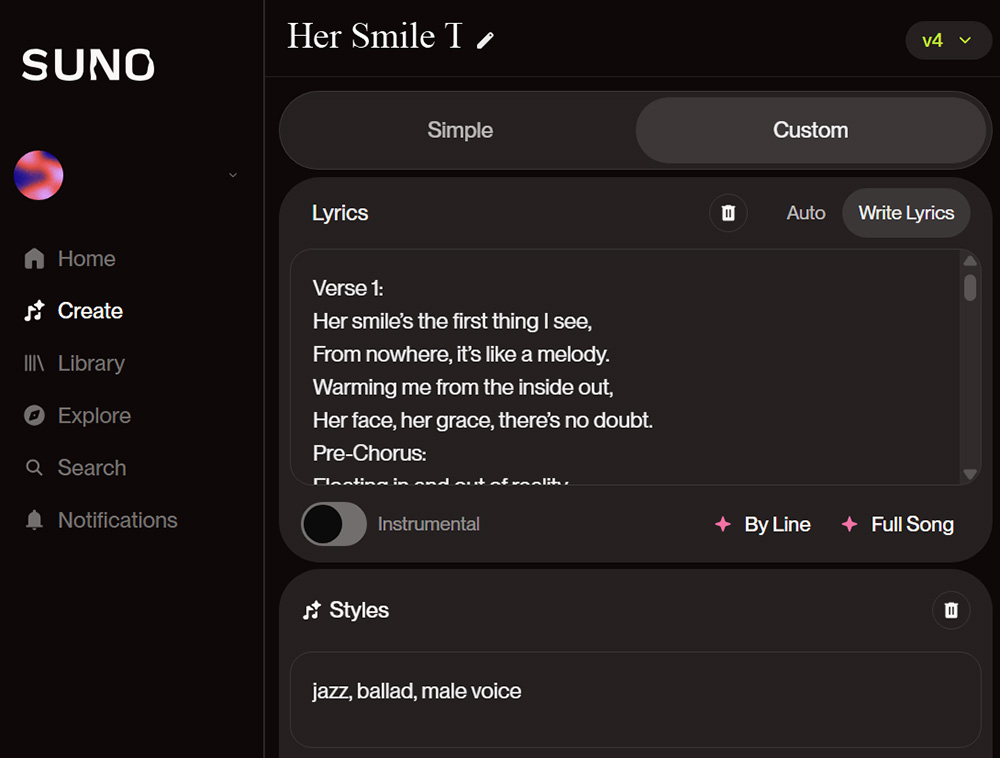From Page to Playback: Rediscovering Old Writings Through Song
Some creative works begin life in a form that never quite makes it past the first draft.
Take, for example, a collection of poems and short stories I wrote in my twenties and thirties. These pages have followed me from home to home, shelf to shelf, and box to box for more years than I care to admit. Beyond collecting dust and watching their ink fade and pencil lines smudge, they had never seen the light of day.
That was the case until some newer AI tools came along.
A Spark from the Past

Revisiting these old pieces, I realized I now had a way to breathe new life into them. While I’ve never played a musical instrument, I’ve always had a love of verse. And suddenly, I had a means to turn these long-hidden writings into songs.
Songs that, for the first time, felt shareable.
So out came my various notebooks in hardcover, spiral-bound, loose sheets, napkins, even files from an old personal computer (or “PC,” as we once proudly called them). As I sifted through them, memories resurfaced. And with those memories came the realization that some of these works might speak to a new generation of listeners.
But I had to learn the basics first. It was time for me to do some research.
What is a verse? A bridge? How should a chorus work?
Music in My Bones (Sort of)

I’ve been a music lover since I was a teenager, and I still own many of the albums I bought back then. Yes, I’m a bit of a collector. While I don’t have thousands of vinyl records, I do have hundreds, carefully stored in archival sleeves.
I even carved out a listening room in my home, outfitted with a phonograph and some decent speakers. (Okay, I waited until the kids moved out and we finished other home projects like adding a backyard deck and an extra storage pantry—but hey, priorities.)
So, with my extensive “formal training” in music appreciation (note the heavy sarcasm about formal training). I began experimenting.
Her Smile: From Poem to Lyrics
The first “poem” I worked with was titled Thoughts of Her Smile. It was short, but it had some lyrical turns and maybe a hook or two that I thought might work for a song.
Plus, it was originally written for my wife when we were dating, so I already knew at least one person would listen to the final version. For context, I was daydreaming while listening to a lecture on music when I started writing this piece.
Original Poem: Thoughts of Her Smile

The melodic form is used…
… my mind drifts from what the lecturer is saying.
Her smile is what comes to me first.
From nowhere, my thoughts focus on her face—
the smile that warms me from the inside…
… melody or phrase, that is cadence, end of melody or…
Floating in and out of reality—
that must be what keeps me captivated with the lady, this love.
Did I say love? It must be—
…is a motive, does anyone know what a motive is?
It remains for me a strange, almost inner physical drama
that draws me towards her…
Captivated by her smile more than she knows.
Poem to Song – Evolution
Since I had never written a song before, I did a little research on song structure. Most popular songs follow a structure made up of three main parts: verse, chorus, and bridge.
- Verse – This is where the story unfolds. Verses often change each time they appear, adding new details or emotions while keeping the same melody. For me, these are the chapters of a song.
- Chorus – This is the part that repeats and is usually the most memorable. It’s where I tend to place the “hook” in my songs. Choruses are often catchier and more emotional, summarizing the theme or message.
- Bridge – A contrasting section that breaks the repetition. It typically introduces a new chord progression, rhythm, or perspective to keep things interesting before returning to the final chorus.
Of course, there are many variations, but a simple structure like this works well:
Verse → Chorus → Verse → Chorus → Bridge → Chorus (Outro)
This pattern gave me a helpful guide when transforming my old poems into lyrics. It helped shape the flow and emotional arc of each song, even if I didn’t follow the structure rigidly every time I worked on a new one.
Before I continue, I also want to mention that this process has given me a kind of mental time travel. I’m often transported back to the place, time, and people that inspired the original writing. Sometimes, new thoughts or emotions surface things I may not have been able to express back when I first composed the piece.
In that way, each song becomes a blast from the past, now reshaped by a contemporary perspective. You might even think of them as a collaboration between my 20-something self… and the older version of me who’s still curious enough to listen and learn.
After several drafts, I revised this short poem into lyrics for a song I titled Captivated by Her Smile (later shortened to Her Smile).
Here’s how it turned out. As you read this next section or listen to my spoken version, remember this is intended to be a song. Don’t judge the results here, you need to listen to the final product so you can compare the two. I think you will agree that this is a way to add new life to some long-forgotten poems.
Captivated by Her Smile
Verse 1:
Her smile’s the first thing I see,
From nowhere, it’s like a melody.
Warming me from the inside out,
Her face, her grace, there’s no doubt.
Pre-Chorus:
Floating in and out of reality,
This love, this feeling, it’s pulling me.
Did I say love? Could it be true?
It’s strange, but I’m drawn to you.
Chorus:
It’s a cadence, it’s a motive,
I’m caught in your groove.
It’s a rhythm, it’s a reason,
I’m lost in your moves.
This inner drama, pulling me close,
Captivated by her smile, more than she knows.
Verse 2:
There’s a harmony in her laughter,
Each note lingers, and I’m chasing after
The way she makes me feel alive,
Like I’m living in a dream, but I’ve arrived.
Pre-Chorus:
Floating in and out of this reality,
This love, this spark, it’s all I see.
Did I say love? Oh, what’s the harm?
In letting her pull me with her charm?
Chorus:
It’s a cadence, it’s a motive,
I’m caught in your groove.
It’s a rhythm, it’s a reason,
I’m lost in your moves.
This inner drama, pulling me close,
Captivated by her smile, more than she knows.
Bridge:
The melody plays, but I can’t find the end.
It’s the way she moves, the way she bends.
Her smile, her eyes, they take control,
And I’m just following where she leads my soul.
Chorus (Outro):
It’s a cadence, it’s a motive,
I’m caught in your groove.
It’s a rhythm, it’s a reason,
I’m lost in your moves.
This inner drama, pulling me close,
Captivated by her smile, more than she knows.
Captivated by her smile, more than she knows.
Turning to AI for the Music
Once the lyrics were ready, I turned to my AI collaborator, Suno, an AI music generation tool. Suno can create songs from scratch, or you can feed it lyrics and a prompt describing the musical style. I chose the latter.
For this track, I used a simple style prompt:
“jazz, ballad, male voice.”
Then came the moment of truth. I clicked Create.
In under a minute, Suno produced two versions of the song. The second one hit closer to the feeling I was going for. It wasn’t perfect, but it was a strong start.

Tuning the Tools
Refining the song took some additional work. Suno includes features like “Extend” to add more chorus repeats and an editor that lets you swap out sections.
These tools are promising, though still evolving. I’d love more precision and control in future versions.
Eventually, I landed on a final version that I generated using Suno’s V4 model, which improved both the voice and instrument quality.
That song is embedded below, and you can also find it in the Rootiques Studio section alongside a few other songs I have created. Be sure to listen to the final product. I think you might be surprised by the result.
A New Creative Path
This experience has been unexpectedly refreshing. It gave me a new creative outlet — one I wouldn’t have discovered without AI as a collaborative partner.
This wasn’t about handing over my work to a machine. It was about building something together that neither of us could have made alone.
I still believe that the human touch and lived experience are essential for telling a compelling story. But for me to learn how to play, produce the music, and sing it, none of that would have been possible without my AI collaborator.
It also opened a new path for storytelling beyond pen, paper, and keyboards.
From dusty poems to digital playback, this journey has been a harmony of memory, music, and technology.
It’s Your Turn
Now it’s time to try it yourself. Do you have an old notebook of poems or stories tucked away somewhere?
Maybe it’s time to revisit them, with a little help from your favorite AI tool.
Whether it’s lyrics, music, or artwork, you might be surprised by what you can create when human creativity and technology work together.
If you end up making something, feel free to reach out or share your story.
I’d love to hear what you’re rediscovering.


Leave a Reply